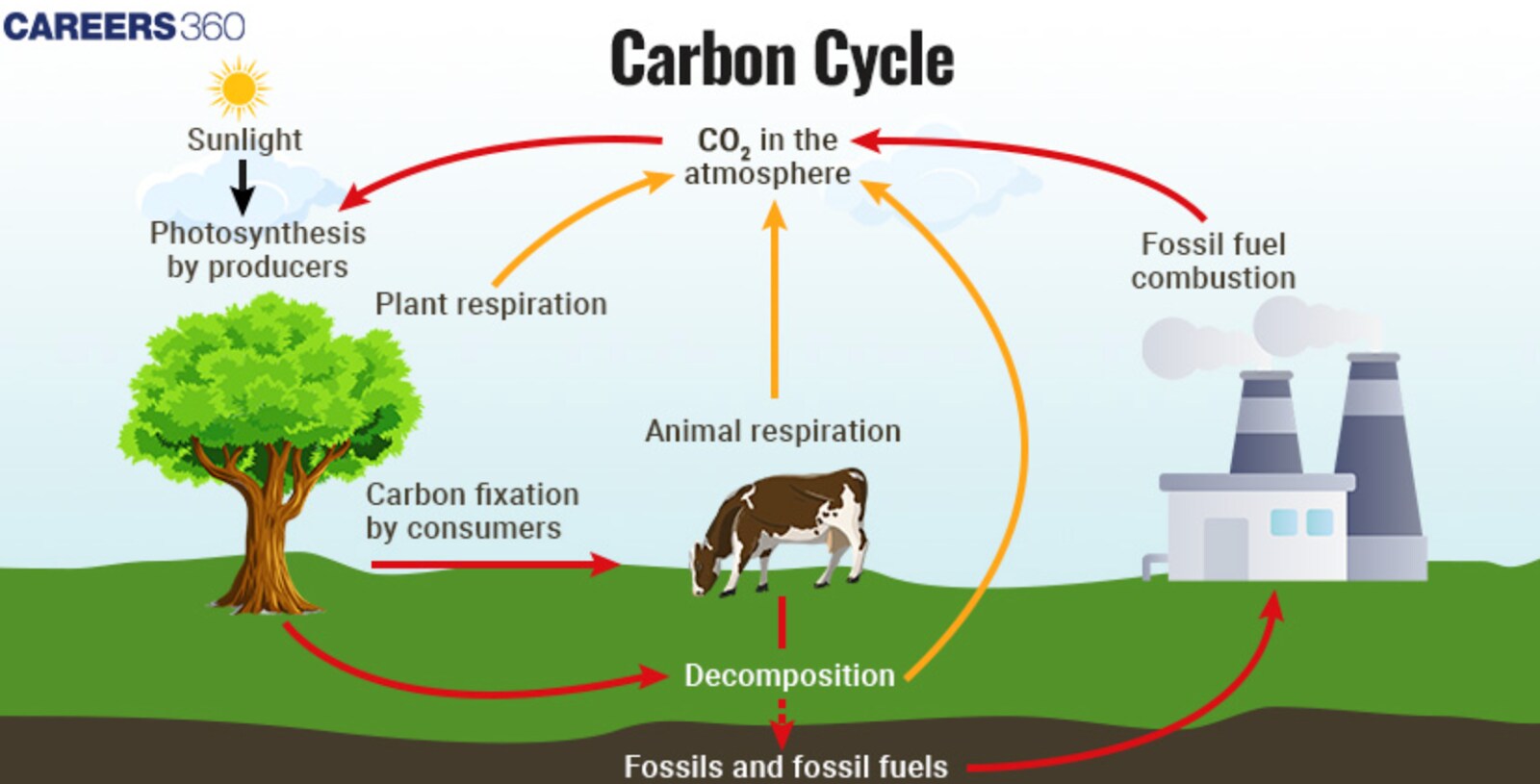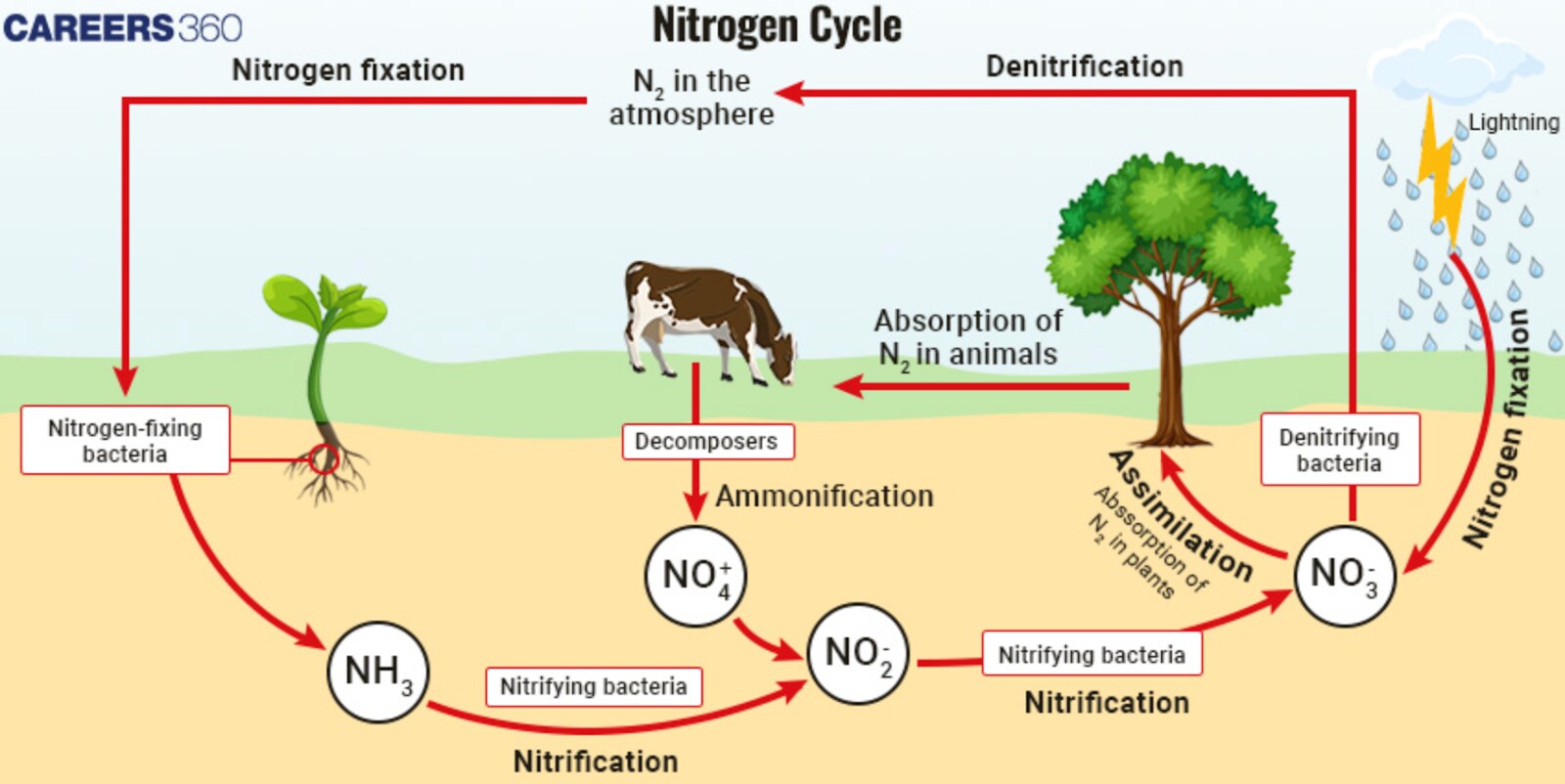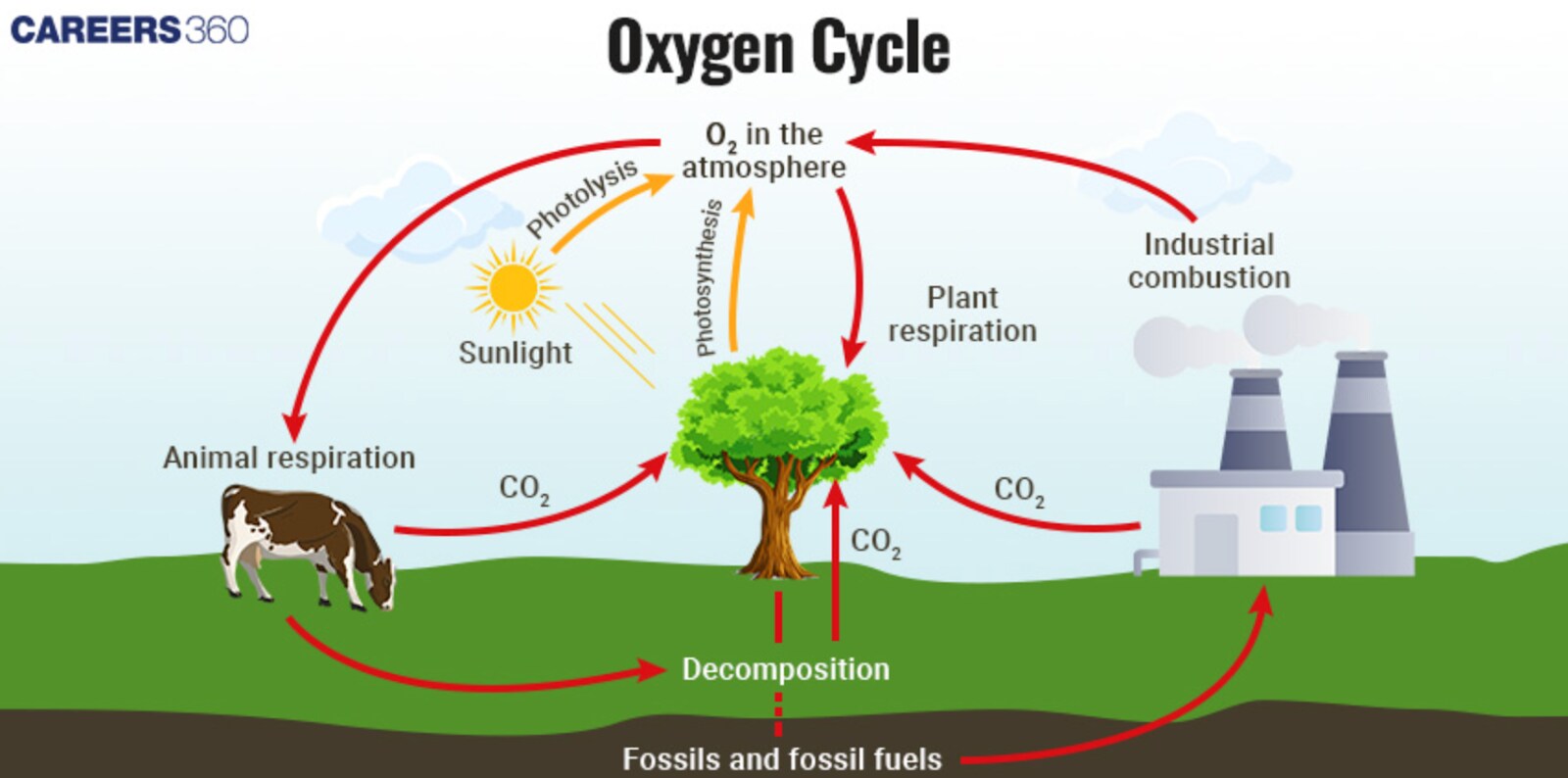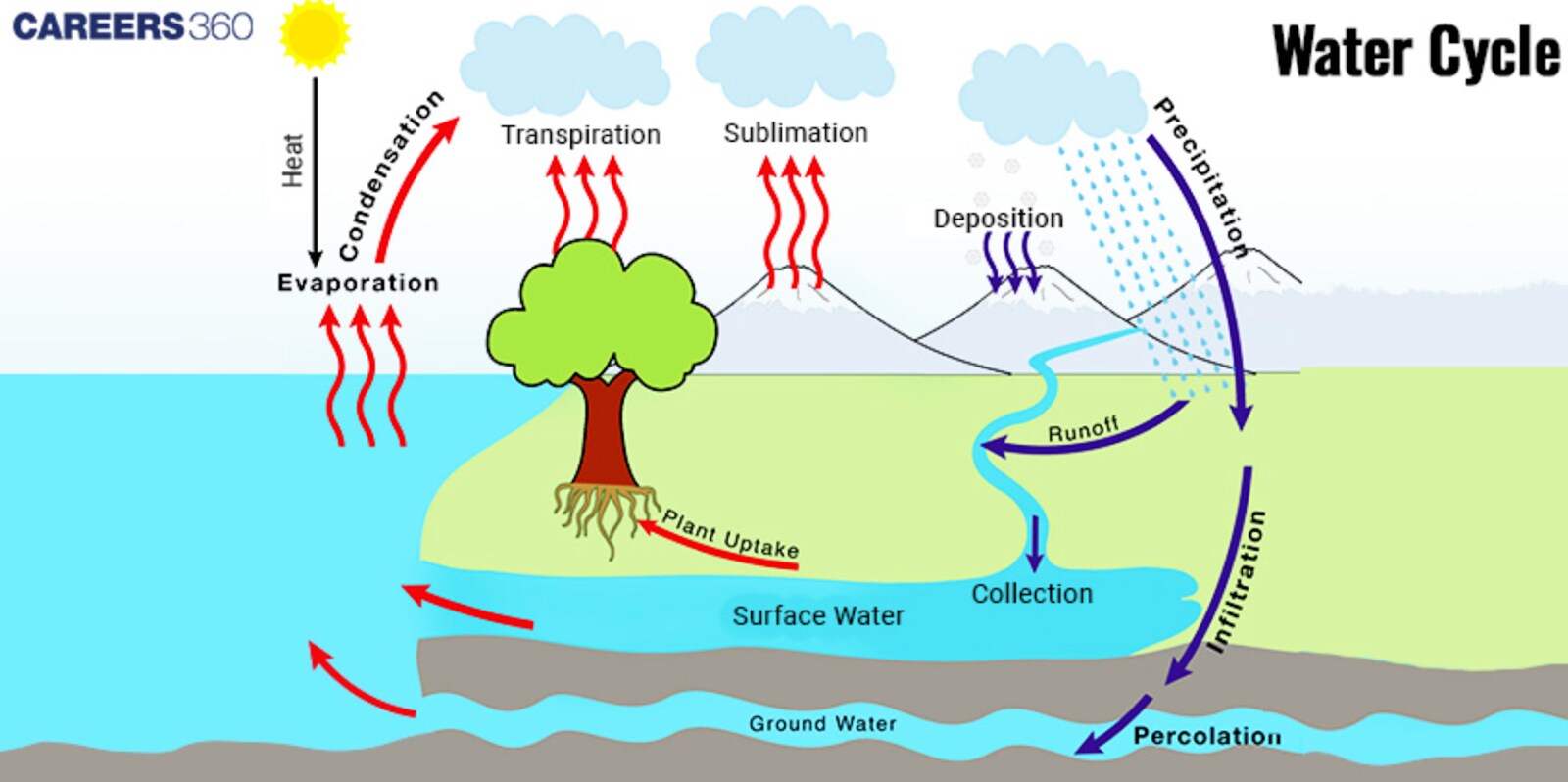Nutrient Cycle: Definition, Examples, Importance, Types, FAQs
What Is Nutrient Cycling?
Nutrient cycling suggests the processes through which nutrients like carbon, nitrogen, phosphorus, and others are cycled and recycled via their various biotic and abiotic components. This amounts to continuous recycling to maintain, at any given time, the balance of the nutrients that sustain life, making available to an organism the essential elements that would see it grow, reproduce and sustain other basic biological functions.
NEET 2025: Mock Test Series | Syllabus | High Scoring Topics | PYQs
NEET Important PYQ's Subject wise: Physics | Chemistry | Biology
New: Meet Careers360 B.Tech/NEET Experts in your City | Book your Seat now
- What Is Nutrient Cycling?
- Energy Flow And Nutrient Cycle
- Examples Of Nutrient Cycles
- Factors Influencing Nutrient Cycling
- Human Impacts On Nutrient Cycles
- Applications And Importance Of Nutrient Cycling
- The Video Recommended On Nutrient Cycling:

Apart from supporting individual organisms, nutrient cycling is also involved in sustaining ecosystems, where it participates in maintaining soil fertility, water quality, and gaseous regulation in the atmosphere. Understanding nutrient cycling is therefore fundamental for the management and conservation of healthy ecosystems that support human activities such as agriculture, forestry, and fisheries.
Energy Flow And Nutrient Cycle
Energy Flow: Energy flow within ecosystems refers to its flow from one trophic level to the other, from producers (plants) through photosynthesis to the conversion of sunlight into chemical energy. While consuming plants or other animals, this energy is then passed down to consumers at increasing trophic levels. Energy flow is unidirectional, lost as heat at each tropic level, promoting key biological processes such as growth, reproduction, and movement. Ultimately, it affects the functioning, and dynamics of ecosystems and thus modifies population sizes, community structures, and ecosystem stability.
Nutrient Cycle: The nutrient cycle is the movement and exchange of organic and inorganic materials between living organisms and the environment. Nutrients like carbon, nitrogen, phosphorus, and others keep getting recycled through biotic and abiotic components of ecosystems. This recycling is essential to soil fertility, plant growth, and the sustenance of biological productivity. The nutrient cycles vary in terms of speed and complexity, from simple to complex biological activities of decomposition, nutrient uptake by plants, and abiotic factors such as climatic conditions and soil characteristics. Knowing nutrient cycles is very critical in ecosystem management, sustainable agriculture, and mitigation measures of human impacts on natural environments.
Examples Of Nutrient Cycles
The examples include:
Carbon Cycle
The carbon cycle is the basis of life on Earth. It holds activities such as photosynthesis, respiration, and decomposition. The plants take carbon dioxide from the atmosphere during photosynthesis, which they then assimilate into organic compounds. Carbon dioxide is released into the atmosphere at the time plants and animals respire. Decomposers release carbon into either the soil or the atmosphere by breaking down organic matter. This cycle, therefore, is the main controller of the concentration of greenhouse gases, which include carbon dioxide, one of the major causative agents of global warming.
Diagram of Carbon Cycle

Nitrogen Cycle
Nitrogen is very essential in the synthesis of proteins and nucleic acids in living organisms. The key step in nitrogen cycling is nitrogen fixation by bacteria which converts atmospheric nitrogen into plant-available forms. Nitrification, and denitrification in which nitrogen compounds are reduced back to atmospheric nitrogen. The nitrogen cycle is a critical process for maintaining soil fertility supporting plant growth and essentially displaying nitrogen availability as a limiting factor in many ecosystems.
Diagram of Nitrogen Cycle

Phosphorus cycle
Phosphorus may be involved in cellular energy transfer, like ATP, and is also part of the structure forming DNA and RNA. By and large, phosphorus cycling involves weathering rocks, which release phosphate ions into soil and water. It is absorbed from the soil by plants and then moves through a food chain as organisms eat plants and other organisms. Finally, it gets back to soil and water through excretion and decomposition. Because phosphorus is cycled relatively slowly compared to other elements, it may limit aquatic productivity, including algal blooms and the overall productivity of ecosystems.
Oxygen Cycle
Oxygen is one of the most critical elements necessary for life, and its flow, or cycling, through an ecosystem, includes some interesting and important processes.
First, oxygen is produced via photosynthesis, the process in which plants, algae, and cyanobacteria use carbon dioxide and water to synthesise glucose and oxygen in the presence of light.
This process not only provides much-needed oxygen into terrestrial and aquatic environments but also contributes enough to the Earth's atmospheric oxygen. Contrastingly, oxygen is utilised in various processes like animal, plant, and microbial respiration that involve the degradation of organic materials for energy, carbon dioxide, and water. Overall, the oxygen cycle is about the supply of aerobic organisms with a metabolic component linking to the regulation of the atmospheric configurations critical in maintaining life on Earth.
Diagram of the Oxygen Cycle

Water Cycle
The water cycle, otherwise known as the hydrologic cycle, explains the movement of water on, above, and below the surface of the Earth.
The first step in the cycle is evaporation, a process where heat energy from the sun vaporises water from oceans, lakes, rivers, and other bodies of water and sends it upward into the atmosphere.
As this warm air cools down, condensation happens and consequently forms minute droplets of water or ice, forming clouds. Next, the water falls from clouds to the Earth's surface as precipitation, taking many forms: rain, snow, sleet, or hail. From this point on land, the water can run over the surface of the ground in the runoff, infiltrate into the soil to become groundwater, or be taken up by plants, eventually becoming evaporated and re-evaporated from the leaves back into the atmosphere - a process called transpiration. The water cycle distributes freshwater around the planet and supports agricultural activities by providing the water necessary for photosynthesis. In addition, it maintains good health in ecosystems because of temperature regulation through evapotranspiration. It also helps regulate global climate patterns. Diagrams portraying these processes put into perspective how the interrelationship and significance of water cycling keep life and ecosystems going on Earth.
Diagram of Water Cycle

Factors Influencing Nutrient Cycling
Decomposers, plants, and microbes are major players in nutrient cycling. In this process, organic material is broken down, and the released nutrients get back into the ecosystem. Biodiversity enhances the availability of nutrients by increasing the number of routes through which nutrients are cycled and by generally enhancing ecosystem resilience. For example, plant diversity may lead to different ways of nutrient uptake, thus enriching the soil and a wide range of supported organisms.
It is the impact of climatic factors on the pace of carrying out biological activities, mainly those associated with decomposition processes and nutrient uptake by plants. The climate will control temperature and precipitation patterns, hence the activity of decomposers and the amount of water available for plants. The pH and texture of soils will influence their potential for nutrient retention or availability. Increasing organic matter content in soils supports higher capacities for nutrient cycling, hence healthier plant growth and biodiversity.
Human Impacts On Nutrient Cycles
Human activities—such as deforestation, agriculture, and increasing urbanisation—are likely to cause a lot of interference with the natural cycles of nutrients. In developing nations, deforestation reduces the organic matter quantity that makes up nutrient cycling, thus leading to degraded soil with low fertility. Management practices in agriculture, particularly excess usage of fertilizers, contribute immensely to runoff from an area and eventually bring about eutrophication in water bodies, which causes an imbalance in aquatic ecosystems. Urbanisation changes the natural landscape and raises impervious surfaces, hence changing infiltration and other nutrient-cycling processes that replenish groundwater.
Applications And Importance Of Nutrient Cycling
Nutrient cycling provides a lot of vital services to the ecosystem, like the maintenance of soil fertility, recycling nutrients, and Pollution control.
Cycling of nutrients through the environment regulates the use of a nutrient in an ecosystem and minimises nutrient loss. Hence, productive soils for agriculture, forestry, and other human uses dependent on healthy ecosystems are maintained.
Some of the sustainable farming practices include crop rotation, cover cropping, and reduced tillage. The essence of this function is to enhance nutrient cycles, as well as minimise losses associated with these nutrients.
They increase the fertility of the soil and reduce the demand for manufactured fertilisers, causing less damage to the environment by way of nutrient runoff and soil erosion.
Precise dispersion of fertiliser is enabled by effective techniques for nutrient management. This accomplishes a balance between nutrient input and output while supporting the enrichment of health, through an enhanced level of organic matter.
The Video Recommended On Nutrient Cycling:
Frequently Asked Questions (FAQs)
Nutrient cycling refers to the transfer and recycling of nutrients through ecosystems by biotic and abiotic interactions. It is very important because it helps in the fertilisation of the soil, plant growth, and maintenance of productivity by ensuring fertilising the soil, plant growth, and maintenance of productivity by ensuring the primary nutrients are available to live organisms at all times.
The major nutrient cycles include the carbon cycle, nitrogen cycle, phosphorus cycle, oxygen cycle, and water cycle. In each cycle, some processes move nutrients through biotic and abiotic components of ecosystems, frequently impacting ecological processes in supporting life.
Anthropogenic activities such as deforestation, agriculture, industrial processes, and urbanisation disrupt the natural nutrient cycles. This can result in both nutrient imbalances and nutrient pollution in the aquatic system, erosion of soils, and loss of biodiversity—factors all affecting the health and sustainability of ecosystems.
Nutrient Cycling: Decomposers play a very important role. They break down organic material derived from dead plants and animals into simple inorganic chemicals. Through decomposition, such nutrients—carbon, nitrogen, phosphorus—are thus released back into the soil, where they are readily taken up by the plants, hence contributing to the fertility of the soil.
Nutrient cycling replenishes the nutrients required for plant growth and productivity in the soil. In their recycling through biological and chemical means, they remain available to the soil to promote healthy development in plants and to support sustainable agriculture.
Also Read
29 Nov'24 01:08 PM
25 Nov'24 08:54 AM
21 Nov'24 03:53 PM
21 Nov'24 01:52 PM
15 Nov'24 02:15 PM
14 Nov'24 09:05 AM
14 Nov'24 08:45 AM
13 Nov'24 10:19 PM